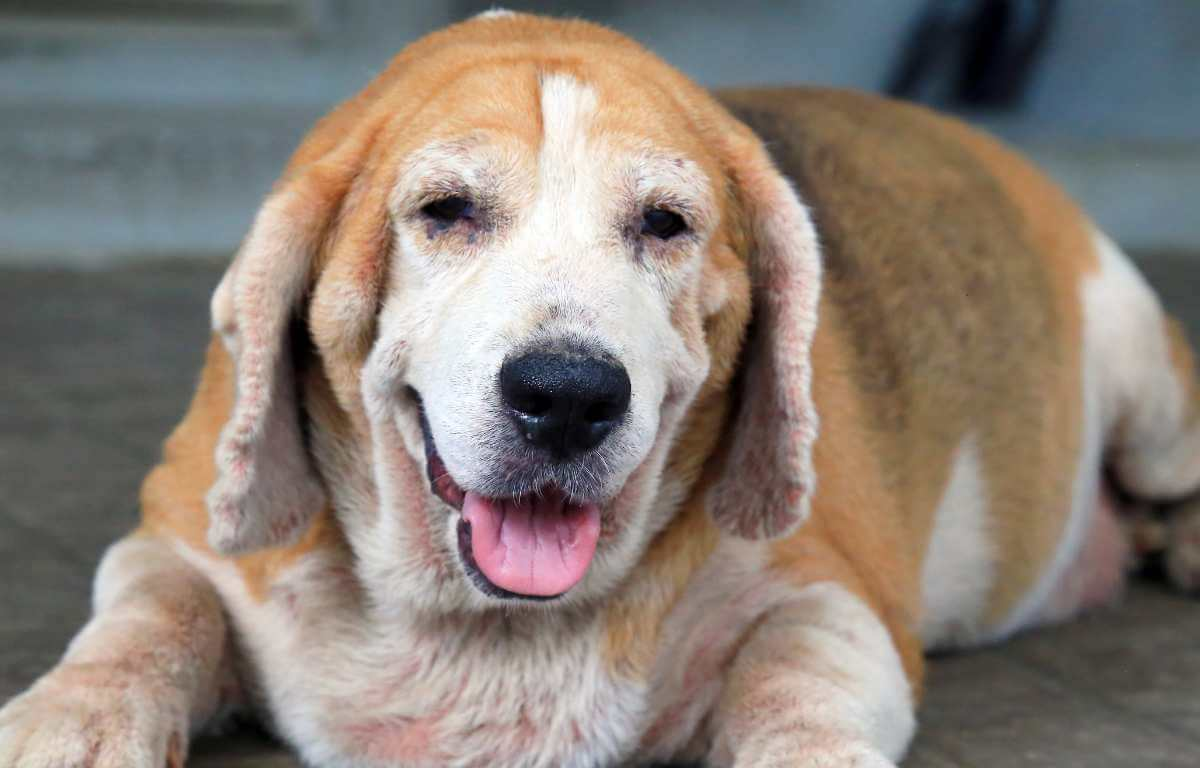Introduction
We all adore our furry friends, don’t we? But have you ever wondered about your Beagle’s age in dog years? Or have you heard some myths about dog years that you’re not sure are true? Well, you’re in the right place! This blog post is all about understanding your dog’s age and clearing up some common misconceptions about dog years. Let’s dive right in!
Understanding the Importance of Knowing Your Dog’s Age
Knowing your dog’s age is more than just a fun fact. It’s crucial to their health and well-being. Just like humans, dogs have different needs at different stages of their lives. Puppies need lots of playtime and socialization, while older dogs might need special diets or more frequent vet visits. By understanding your dog’s age, you can provide the best care for them at every stage of their life.
Common Misconceptions About Dog Years
Have you ever heard that one human year equals seven dog years? Well, that’s not entirely accurate. The truth is, the way dogs age is a bit more complicated than that. It depends on factors like their breed and size. For example, larger dogs tend to age faster than smaller ones. So, while it’s a neat idea, the seven-year rule isn’t a one-size-fits-all answer. We’ll delve deeper into this later in the blog.
So, are you ready to become a dog age expert? Let’s get started on this exciting journey of understanding our beloved Beagles even better!
How to Tell How Old a Dog Is

Ever wondered how old your furry friend might be? Well, some tell-tale signs can help you figure it out. Let’s dive in and explore some physical signs that can help you determine your dog’s age.
1. Physical Signs
Physical signs are the most obvious indicators of a dog’s age. Here are some things to look out for:
Examining the dog’s teeth:

A dog’s teeth can tell a lot about their age. Puppies have bright white teeth, while adult dogs have slightly yellowish teeth. If the teeth are worn down or heavily stained, your dog is likely in its senior years. However, remember that diet and care can also affect a dog’s dental health, so this isn’t a foolproof method.
Checking the dog’s coat:
A young dog usually has a smooth, shiny coat. As dogs age, their coats can become duller and thinner, and they may even start to gray – especially around the muzzle. But keep in mind, that some dogs start graying early, so this isn’t always a clear sign of old age.
Evaluating the dog’s eyes:

Bright, clear eyes are a sign of youth. As dogs get older, their eyes may become cloudy or hazy. This condition, known as nuclear sclerosis, usually starts when a dog is about 6 to 8 years old. But remember, other health issues can also cause changes in a dog’s eyes, so always consult with a vet if you notice something unusual.
Remember, these are just general guidelines. Every dog is unique and may age differently. If you’re unsure about your dog’s age, it’s always best to consult with a vet. They can perform more detailed examinations and tests to give you a more accurate estimate.
2. Behavioral Signs for dogs age

Just like us humans, our furry friends also show changes in their behavior as they age. Let’s take a closer look at some of these behavioral signs.
Energy levels
Ever noticed how puppies are always on the go, ready to play and explore? As dogs get older, their energy levels tend to decrease. This is especially true for beagles, who are known for their lively and energetic nature. If your beagle is not as active as they used to be, it could be a sign that they’re getting older.
Sleeping patterns

Changes in sleeping patterns can also indicate your beagle’s age. Young dogs tend to sleep a lot, wake up full of energy, and then sleep again after a bout of activity. Older dogs, on the other hand, may sleep more overall but wake up more frequently during the night. So, if your beagle is sleeping more than usual or seems restless at night, they might be showing signs of aging.
Changes in behavior
Lastly, changes in behavior can be a strong indicator of a dog’s age. Older dogs may become more anxious, confused, or even aggressive. They may also lose interest in activities they once enjoyed. If your beagle is showing any of these changes, it’s important to consult with a vet to rule out any health issues and to better understand their aging process.

Remember, every dog is unique and may not show all these signs. It’s always best to consult with a vet if you notice any changes in your beagle’s behavior. After all, they’re not just pets, they’re part of the family!
Understanding Dog Ages

Hey there, fellow beagle lovers! Ever wondered how your furry friend’s age compares to human years? You’ve probably heard of the old saying that one dog year equals seven human years. But is that true? Let’s dive into this topic and bust some myths!
The 7-Year Myth
First, let’s understand where this idea comes from and why it might not be as accurate as we once thought.
Origins of the 7-year rule
Believe it or not, the 7-year rule has been around for centuries. It’s thought to have started because people noticed that dogs age faster than humans. Someone did some quick math and figured that since humans live to be about 70 and dogs live to be about 10, one dog year must be equal to seven human years. Simple, right? But not quite accurate.
Why the 7-year rule is inaccurate
The 7-year rule is a rough estimate, but it’s not very precise. Dogs and humans don’t age at the same rate. Puppies grow up much faster than human babies. A one-year-old dog is more like a teenager in human years. Plus, different breeds age at different rates. A small dog like a beagle might live to be 15 or even 20, while a large dog might only live to be 10. So, the 7-year rule doesn’t fit for all dogs.
So, if the 7-year rule isn’t accurate, then what is? Stay tuned for our next section where we’ll talk about a more accurate way to calculate your beagle’s age in human years!
A More Accurate Calculation
Now that we’ve busted the myth of the 7-year rule, let’s dive into a more accurate way of calculating your beagle’s age in dog years. It’s a bit more complex, but hey, who said understanding our furry friends was going to be easy?
How Dog Years Really Work
Contrary to the 7-year rule, the American Veterinary Medical Association suggests a different approach. They say that the first year of a medium-sized dog’s life is approximately 15 human years. The second year of a dog’s life equals about nine human years. After that, each dog year equals about five human years. So, if your beagle is five years old, in human years, that would be approximately 36 years old. Interesting, right?
Factors that Influence a Dog’s Lifespan
Just like us humans, several factors can influence a dog’s lifespan. These include:
Diet: A balanced diet can help your beagle live a longer, healthier life.
Exercise: Regular physical activity is crucial for keeping your beagle fit and happy.

Genetics: Some beagles may be predisposed to certain health conditions that can affect their lifespan.
Environment: A safe, loving home can contribute to a longer lifespan for your beagle.
By understanding these factors, you can help ensure your beagle lives a long, happy life.
Remember, every beagle is unique and may age differently. So, while these calculations give us a general idea, the best way to know how your beagle is doing is through regular check-ups with your vet.
Stay tuned for our next section where we’ll look at a case study of determining age in beagles. It’s going to be a tail-wagging good time!
Case Study: Determining Age in Beagles
Knowing the age of your beagle can help you provide the best care for your furry friend. Let’s dive into the physical and behavioral signs of aging in beagles, as well as their life expectancy and health concerns.
Physical characteristics of aging in beagles

As beagles age, they undergo several physical changes. Their fur may start to gray, especially around the muzzle and eyes. Their eyes might also appear cloudier due to a condition known as nuclear sclerosis, common in older dogs. Beagles may also gain weight more easily and have less energy for long walks or play sessions. It’s important to keep an eye on these changes and adjust their diet and exercise routine accordingly.
Behavioral signs of aging in beagles
Beagles may also show behavioral changes as they age. They might sleep more, become less interested in play, or show signs of confusion or disorientation. Some beagles may become more clingy, while others might prefer to spend more time alone. These changes can be subtle, so it’s important to pay close attention to your beagle’s behavior.
Life Expectancy and Health Concerns in Beagles
Beagles typically live between 10 to 15 years. As they age, they may develop health issues like arthritis, heart disease, or kidney problems. Regular vet check-ups can help catch these conditions early and manage them effectively. A healthy diet and regular exercise can also contribute to a longer, healthier life for your beagle.
Remember, every beagle is unique and may age differently. Regular vet visits and attentive care can ensure your beagle stays happy and healthy throughout their golden years.
| Signs of Aging | What to Do |
|---|---|
| Graying fur | Keep an eye on other physical changes |
| Cloudy eyes | Consult a vet for potential eye conditions |
| Weight gain | Adjust diet and exercise routine |
| Behavioral changes | Monitor closely and consult a vet if necessary |
| Health issues | Regular vet check-ups and a healthy lifestyle |
Conclusion

Well, folks, we’ve had quite a journey today, haven’t we? We’ve learned about how to tell a beagle’s age, what dog years mean, and even looked at a real-life example. But before we wrap up, let’s go over a couple of key points that are super important for your beagle’s health and happiness.
Importance of regular vet check-ups
Just like us humans, our furry friends need regular check-ups too. It’s not just about shots and medicines. Regular vet visits can help catch any potential health issues early. This means your vet can start treatment sooner, which can make a big difference for your beagle’s health. Plus, your vet can give you tips and advice tailored to your beagle’s age and health status. So, don’t skip those vet appointments!
How understanding your dog’s age can improve their quality of life
Knowing your beagle’s age isn’t just a fun fact. It’s a crucial piece of information that can help you take better care of your pup. For instance, puppies and senior dogs have different dietary needs. Similarly, younger dogs may need more exercise, while older ones might need more rest. By understanding your beagle’s age, you can provide the right care, food, and activities that suit their stage in life. This can greatly improve their quality of life and keep them happy and healthy for longer.
In the end, remember that every beagle is unique. They all age at their own pace and have their own needs. But with love, care, and a bit of knowledge, we can make their lives as wonderful as they make ours. Keep loving your beagle!

